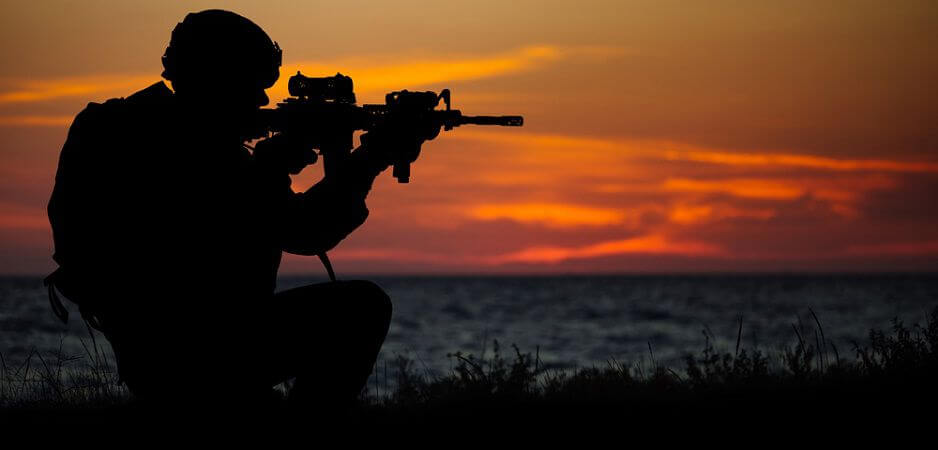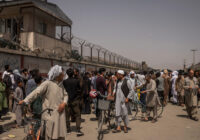A modest increase in US troop numbers is unlikely to reverse worsening insecurity in Afghanistan in the coming year.
Afghanistan has experienced a violent 2017, with the government continuing to steadily lose territory to the Taliban. According to the US Special Inspector General for Afghanistan Reconstruction (SIGAR), the Afghan government’s control over districts has deteriorated to its lowest level since December 2015, when SIGAR first began analyzing such data. US forces in Afghanistan estimate that as of August 2017, the government controlled about 56.8% of the country’s 407 districts, while the Taliban controlled about 13.2% and the remaining 30% were contested.
Concurrently, UN estimates show that armed clashes in Afghanistan are at a record high, indicating that the Taliban is moving away from a guerrilla-style warfare and to more conventional combat techniques that involve direct fighting between government forces and insurgents.
Meanwhile, in eastern Afghanistan, the Islamic State (IS) remains active despite intensified US air strikes. The campaign included the largest ever conventional bomb used by Washington in combat in April, which reportedly killed 92 militants and destroyed a complex of tunnels and bunkers used by IS in Acin district in Nangarhar province.
The uptick in violence has placed severe constraints on Afghan security forces, evident in the increasing number of attacks in Kabul. This year has seen multiple attacks in and around Wazir Akbar Khan, the district in the heavily-fortified Green Zone that houses all major government buildings and embassies. On October 31, a suicide bombing occurred a few hundred meters from the American and British embassies, and on May 31, Kabul witnessed its worst attack yet when a car bomb killed more than 150 people and wounded hundreds of others near the German embassy. Insecurity in the capital has been so high this year that at the end of the first six months of 2017, the United Nations assessed that Kabul province had become the deadliest for civilians in Afghanistan, displacing Helmand for the first time in decades.
Attacks in Kabul have ranged from isolated shootings, IED and grenade attacks to suicide bombings and even rocket attacks, as seen during US Secretary of Defense Jim Mattis’ unannounced visit to Kabul in September when 30-40 rockets were fired in and around Kabul airport. Many of the incidents have been complex attacks, where suicide bombers detonate their devices outside targeted buildings, paving the way for gunmen to storm the premises and continue the attack until security forces intervene. Examples include the March attack on the Kabul military hospital, which killed over 50 people, and the attempt to storm the Iraqi embassy in July that left two Afghan employees dead and three policemen injured.
Several of these attacks were claimed by the Taliban, although IS has increasingly asserted responsibility. In particular, attacks on Shia mosques — such as the October 20 suicide bombings that killed 72 people in Kabul’s Imam Zaman mosque — are almost always attributed to and claimed by IS, as the Taliban typically avoids stoking sectarian tensions. However, IS has also claimed attacks on major targets, including the Kabul military hospital and even the rocket attacks on Kabul airport in September, although this attack was also claimed by the Taliban. In many cases, the accuracy of the Islamic State’s claims remains unclear. The rocket attack on Kabul airport, for example, was most likely carried out by the Taliban, which has a proven history of carrying out coordinated attacks and firing rockets against critical infrastructure.
 Nevertheless, in conducting mass-casualty attacks against Shia minorities, IS has demonstrated the capability to carry out major attacks in Kabul. The Islamic State’s growing activity in Kabul and elsewhere in the country indicates its intention of expanding beyond its stronghold of Nangarhar province. This, in turn, has raised concerns that the group is seeking to make Afghanistan its new base, particularly as it faces significant military pressure in Iraq and Syria, where it has rapidly lost territory over 2017. The Iraqi embassy attack, for instance, came three weeks after the fall of Mosul and led to widespread speculation that the operation was in retaliation for Iraqi military gains against IS.
Nevertheless, in conducting mass-casualty attacks against Shia minorities, IS has demonstrated the capability to carry out major attacks in Kabul. The Islamic State’s growing activity in Kabul and elsewhere in the country indicates its intention of expanding beyond its stronghold of Nangarhar province. This, in turn, has raised concerns that the group is seeking to make Afghanistan its new base, particularly as it faces significant military pressure in Iraq and Syria, where it has rapidly lost territory over 2017. The Iraqi embassy attack, for instance, came three weeks after the fall of Mosul and led to widespread speculation that the operation was in retaliation for Iraqi military gains against IS.
Afghanistan in 2018
In this context, the coming year is likely to remain a challenging one for Afghanistan. Although the US has pledged to deploy 3,000 additional security personnel to the country — bringing the total number of US troops in Afghanistan to about 14,000 — the figure is unlikely to be sufficient to counter the Taliban’s gains, particularly in rural areas. US Director of National Intelligence Dan Coats observed in May that the performance of Afghan security forces will probably worsen in 2018 due to a combination of Taliban operations, combat casualties, desertions, poor logistics support and weak leadership. He also noted that Afghanistan will remain dependent on external support until it either ends the insurgency or engages in meaningful peace talks with the Taliban.
Trends over the past few years indicate that Afghan forces lack the ability to win the war militarily, evident in the Afghan army’s failure to hold on to territorial gains achieved after the surge in US troops seen in December 2009. The Afghan government led by US ally President Ashraf Ghani is weak and beset by infighting, making it harder to achieve a political settlement with the Taliban. US efforts to restart the official peace process — along with Afghanistan, Pakistan and China — have faltered, as the Taliban has refused to participate in negotiations with what it sees as a US-funded government in Kabul.
The Taliban’s territorial gains also bode poorly for the prospect of peace talks, given the incentive for the insurgent group to push for further territory and increase pressure on government troops. Meanwhile, the Islamic State’s growing geographic presence in the country mean that considerable US resources, in the form of air strikes and counterterrorism activities, will continue to be diverted toward the group.
In the near term, a form of stalemate appears likely. Afghan security forces will continue to fight Taliban insurgents to ensure that the group does not capture strategic districts or overrun key provincial capitals, while both the Taliban and IS are likely to continue carrying out periodic mass-casualty attacks in Kabul and other major cities to maintain pressure on government resources.
*[This article is based on a report by PGI Intelligence.]
The views expressed in this article are the author’s own and do not necessarily reflect Fair Observer’s editorial policy.
Photo Credit: NEstudio / Shutterstock.com
Support Fair Observer
We rely on your support for our independence, diversity and quality.
For more than 10 years, Fair Observer has been free, fair and independent. No billionaire owns us, no advertisers control us. We are a reader-supported nonprofit. Unlike many other publications, we keep our content free for readers regardless of where they live or whether they can afford to pay. We have no paywalls and no ads.
In the post-truth era of fake news, echo chambers and filter bubbles, we publish a plurality of perspectives from around the world. Anyone can publish with us, but everyone goes through a rigorous editorial process. So, you get fact-checked, well-reasoned content instead of noise.
We publish 2,500+ voices from 90+ countries. We also conduct education and training programs
on subjects ranging from digital media and journalism to writing and critical thinking. This
doesn’t come cheap. Servers, editors, trainers and web developers cost
money.
Please consider supporting us on a regular basis as a recurring donor or a
sustaining member.
Will you support FO’s journalism?
We rely on your support for our independence, diversity and quality.






